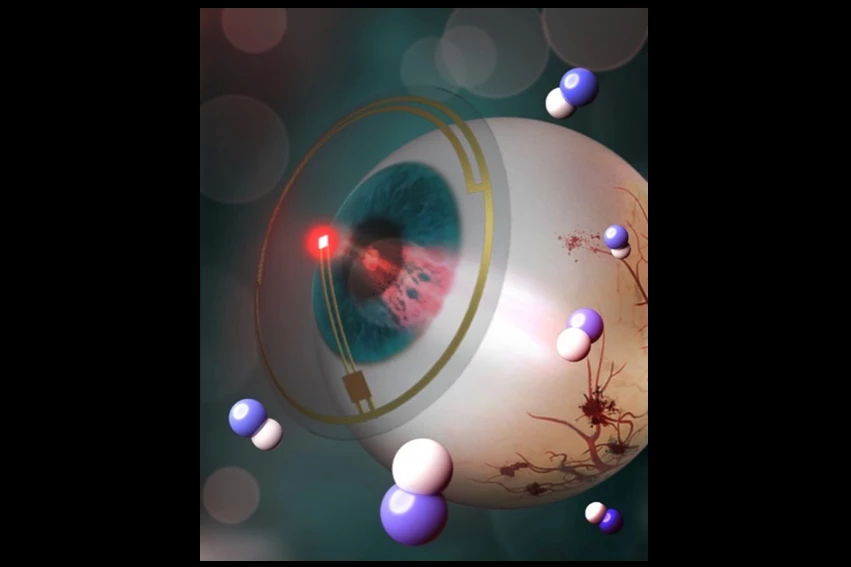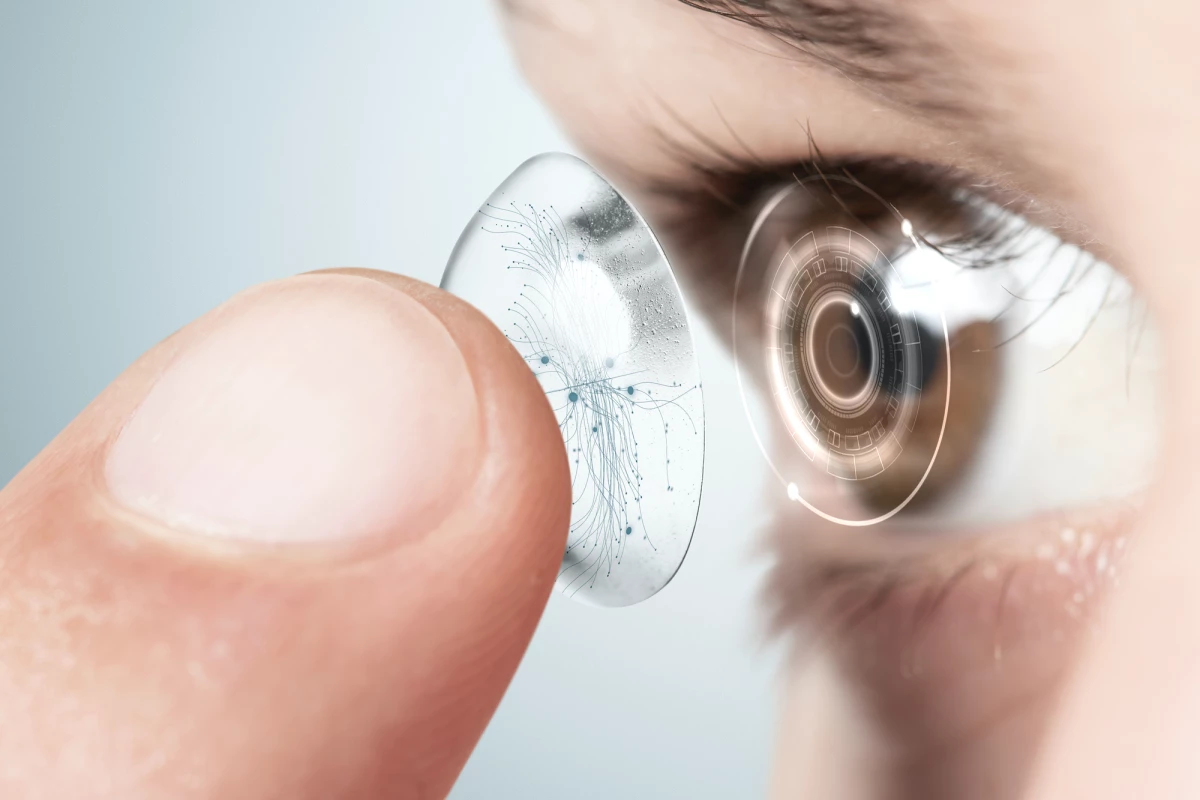If diabetes progresses too far, it can result in a potentially blinding condition known as retinopathy. And while existing treatments are invasive and often painful, there may be new hope in the form of an LED-equipped contact lens.
Diabetic retinopathy occurs when the disease damages tiny blood vessels in the eye, reducing blood flow to nerve cells in the retina, starving them of oxygen and causing them to die.
The body tries to compensate by growing new blood vessels in the retina, although the diabetes often causes these to be imperfectly formed, resulting in their bleeding and damaging the retina. That damage is repaired via the growth of scar tissue – not new nerve cells – so over time, the patient loses their sight.
Existing treatments for diabetic retinopathy center around reducing the retina's oxygen demands. One approach involves using a laser to burn away nerve cells in the peripheral part of the retina. By eliminating those cells, the oxygen that would have been used by them can instead now be used by nerve cells in the retina's more important central area.
Another approach involves giving the patient an injection in the eyeball, introducing medication that reduces the growth of new blood vessels. Unfortunately, though, both the laser treatment and the injections are commonly reported to be quite painful.
Scientists are therefore now looking into yet another treatment – called photobiomodulation – which involves irradiating the eye with far-red to near-infrared (FR/NIR) light. Although the exact mechanism by which the therapy works is not fully understood, it is believed that the light causes ocular blood vessels to dilate. This increases oxygen-rich blood flow to the retinal cells via existing blood vessels, without prompting the growth of imperfect new ones.
Created by a team from South Korea's Pohang University of Science and Technology (POSTECH), the new wirelessly powered contact lens is designed to focus the light exactly where it's needed.

The prototype device incorporates an FR/NIR LED, an integrated circuit chip, and a wireless power coil, all of which are embedded within a silicone elastomer lens. It was tested on rabbits that were in the early stages of diabetic retinopathy, with each animal receiving 15 minutes of 120-microwatt FR/NIR light exposure three times a week, over an 8-week timespan.
It was found that once the treatment period was over, the rabbits exhibited a significant reduction in retinopathy-related retinal damage. By contrast, no such improvement occurred in an untreated control group. Additionally, although the LED treatment did cause a temporary increase in eyeball temperature, no damage to the cornea or any other parts of the eye was observed.
A paper on the research – which was led by Prof. Sei Kwang Hahn and PhD candidate Geon-Hui Lee – was recently published in the journal Advanced Science.
Source: POSTECH via EurekAlert




